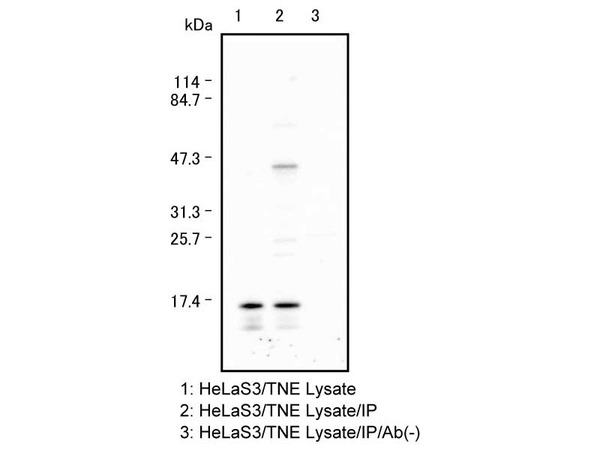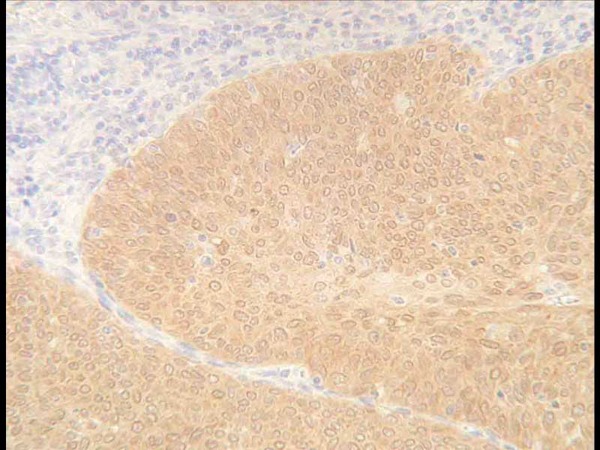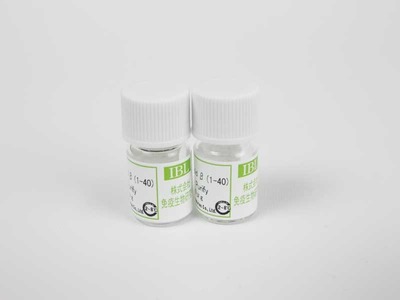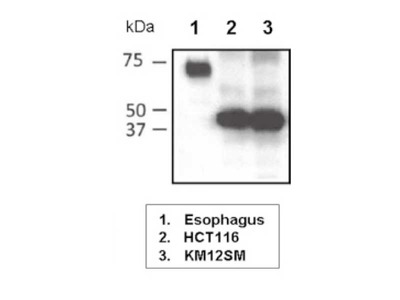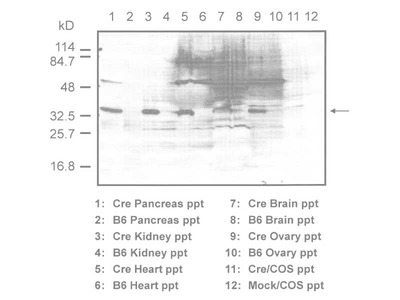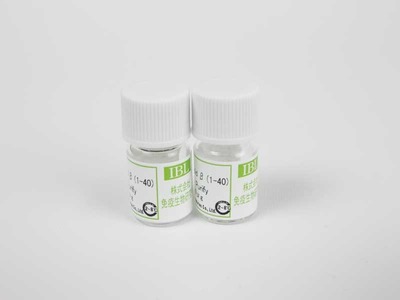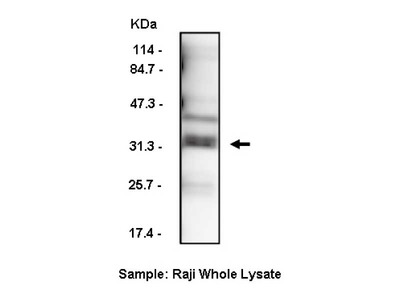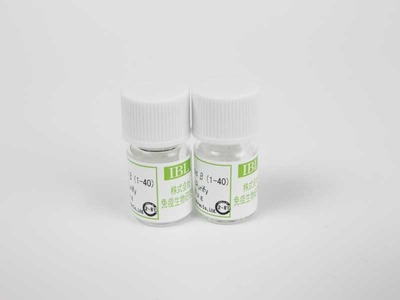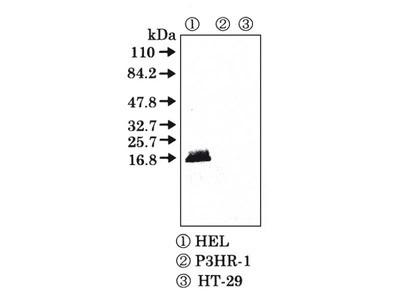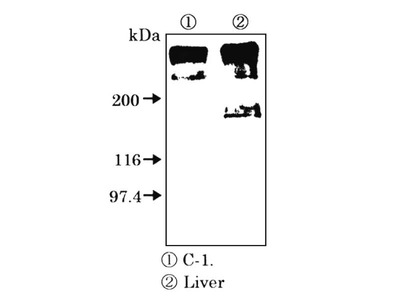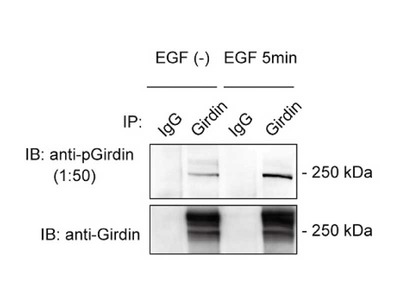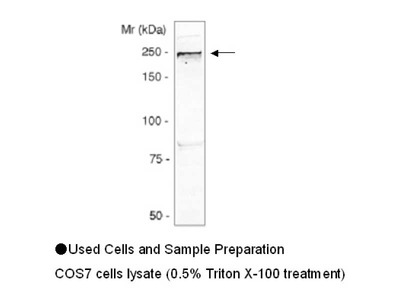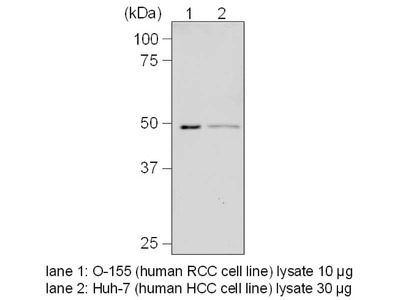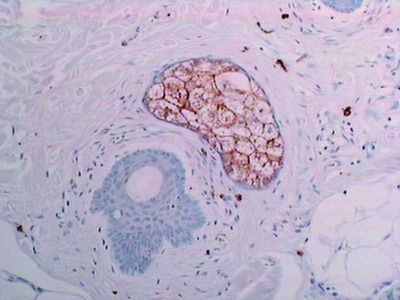- HOME >
- For Researchers >
- Product Search >
- Search Result >
- #11104 Anti-Human p16 INK4a (1H4) Mouse IgG MoAb
Product Search
#11104 Anti-Human p16 INK4a (1H4) Mouse IgG MoAb
- Intended Use:
- Research reagents
- Application:
- WB, IP, IHC
- Package Size1:
- 100 μg
- Package Size2:
- 10 μg
- Note on Application Abbreviations
- WB:Western Blotting
- IP:Immunoprecipitation
- IHC:Immunohistochemistry
※ The product indicated as "Research reagents" in the column Intended Use cannot be used
for diagnostic nor any medical purpose.
※ The datasheet listed on this page is sample only. Please refer to the datasheet
enclosed in the product purchased before use.
Product Overview
Product Overview
| Product Code | 11104 |
|---|---|
| Product Name | Anti-Human p16 INK4a (1H4) Mouse IgG MoAb |
| Intended Use | Research reagents |
| Application | WB, IP, IHC |
| Species | Human |
| Immunizing antigen | Recombinant protein of human p16 |
| Source | Mouse-Mouse hybridoma (X63 - Ag 8.653 × BALB/c mouse spleen cells) |
| Clone Name | 1H4 |
| Subclass | IgG1 |
| Purification Method | Affinity purified with Protein A |
| Package Form | Lyophilized product from PBS containing 1 % BSA and 0.05 % NaN3 |
| Storage Condition | 2 - 8℃ |
| Poisonous and Deleterious Substances | Applicable |
| Cartagena | Not Applicable |
| Package Size 1 | 100 μg |
| Package Size 2 | 10 μg |
| Remarks1 | The commercial use of products without our permission is prohibited. Please make sure to contact us and obtain permission. |
Product Description
Product Description
p16INK4a is a cyclin-dependent kinase (CDK) inhibitor, and binds CDK4 and CDK6 and inhibits their kinase activity. It is also called MTS1 and INK4a, and p15INK4b (MTS2), p18INK4c and p19INK4d are other members of the INK4 family. p16INK4a is a tumor suppressor gene, and inactivation is seen in many cancer tissues and cancer cell lines as a result of mutations or hypermethylation. However, overexpression of p16INK4a has been reported in several tumors, including cervical cancer. Infection with human papilloma virus (HPV) has been suggested to play a large role in the development of cases of cervical cancer. Assessment of overexpression of p16INK4a by immunohistochemistry methods has been shown to be more useful in research of cervical dysplasia than existing methods of detection of high-risk-group HPV infection.

